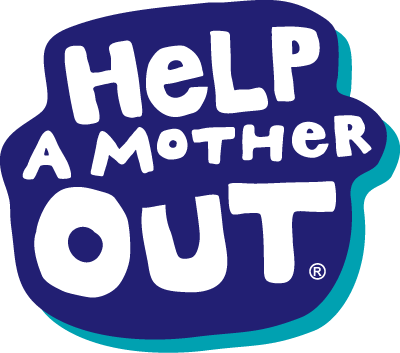Or, the origins of Help A Mother Out
A few months ago, Lisa and I were enjoying a rare night out without kids or spouses. Over happy-hour sushi and cocktails, our conversation took a more serious turn. Like everyone else these days, we’ve been feeling the pinch of the economic downturn and the worry of an uncertain future—and yet we both realized just how fortunate we still are: We have our homes, our households have steady (if unpredictable) incomes, our children are healthy and well cared for. Lisa had recently heard about the growing numbers of newly homeless women and children and about the tent cities in Sacramento (prominently, possibly erroneously, featured on Oprah), and was deeply affected by the knowledge that many of these families never thought this could happen to them either.
A few weeks later, we both attended a knitting class that was a benefit for the Women’s Daytime Drop-in Center in Berkeley, an incredible organization neither of us had heard of before. The center’s volunteer coordinator spoke passionately of the work they’re doing—providing a safe, calm space for homeless women and children to spend the daytime hours, when overnight shelters are closed—and their most pressing needs—general funding, of course, but also very basic things like diapers, wipes, and toiletries.
It was a revelation to us that something so basic as a diaper could have such a big impact: Diapers are not covered by public assistance programs like WIC and diaper companies do not make big donations to shelters or outreach programs. If you’re not a parent, you might be surprised to realize that a “jumbo” pack of Pampers costs from $10 to $15—that’s 20 to 30 cents per diaper, depending on the size of the diaper. And if you can’t shop at discount stores like Target or Costco and instead have to rely on corner stores or drugstores, you’ll often end up paying even more per diaper. For reference, a newborn baby goes through 60 or more diapers a week. When money’s tight, that’s a lot of dough to drop.
According to the DiaperBank.org, in low-income families, a baby can spend a day or longer in the same diaper, “leading to potential health and abuse risks.” And furthermore, without an adequate supply of diapers, low-income parents can’t take advantage of free or subsidized childcare, making it even more difficult for them to consistently attend jobs or school.
And so over another meal (this time of kid-friendly french fries and mac ‘n cheese) we conceived of Help A Mother Out as a way to raise awareness and to raise some funds—to get a few more diapers into the hands of mothers who really, really need them. Lisa started contacting Bay Area agencies that provide services to homeless and low-income women, and was immediately overwhelmed by both the need for assistance and other people’s desire to help out. We spread the word to our friends and colleagues via email, Facebook, and neighborhood listservs, and before we knew it, diaper drives were under way in San Francisco, Oakland, Berkeley, Sacramento, San Jose, and San Diego. (And now even Tucson!)
It sounds big, and maybe it is, but it’s also very small: It’s one or two people, figuring out how to move beyond rhetoric to action; a handful of people buying cases of diapers off an Amazon wishlist; busy mothers donating their collections of hotel shampoos. It’s finding the time and the means to lend a hand to our community. We may not be changing the world, but changing diapers is pretty important too.
